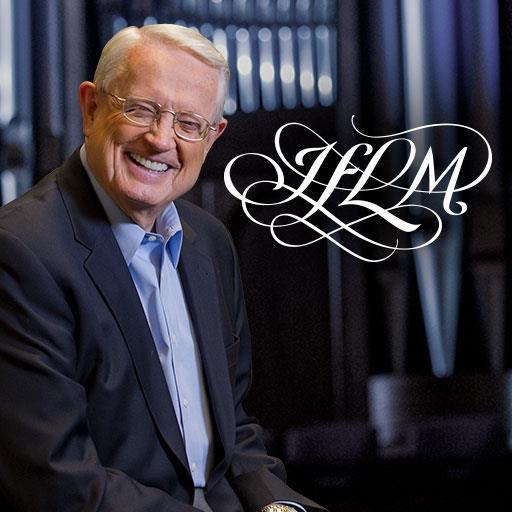You’ve been there.
You know—that place where you should bring up the gospel, but, for whatever reason, you don’t. It’s that awkward moment where cotton peaks for harvest in your mouth, your brain puts a padlock on any memory verses, your breathing becomes irregular, and your excuse Rolodex is spinning to find a way out of the conversation.
There are several reasons most of us are reluctant to witness for Jesus Christ. One is the feeling of ignorance. We don’t really know how to go about it.
Another is sort of an indifference that sweeps over us. We’re well-fed. We believe in the Savior. Our family is growing. We sort of shift that responsibility to someone else—the televangelist, the pastor, or the big conference crusade leader who’s able to declare Christ so well.
Another reason we are reluctant is fear. No one likes to be asked questions they can’t answer, especially with a stranger. We don’t enjoy the unpredictable. We’re afraid of a hostile response. We’re afraid of appearing foolish. So we choose to keep our faith to ourselves.
Make no mistake—witnessing takes a big dose of courage.
It also takes a proven method. Various methods are employed to communicate the good news of Christ to the lost. Some of the approaches appear to be successful and effective on the surface, but, underneath, they leave much to be desired.
Take the Sharpshooter Approach, for example: “The more scalps, the better.” This numerical method is decision-centered, and little (if any) effort is directed toward follow-up or discipleship or cultivating a relationship. Such anxious hunters are not difficult to identify. They can usually be overheard counting (out loud) the scalps on their belts or can be seen shooting their flaming arrows into every wagon train they spot. Tact is not their long suit.
The Harvard Approach is quite different: “Let’s all discuss the world’s religions.” This reason-centered approach attracts both genuine and pseudo-intellectuals, and while it is educational and occasionally quite stimulating, it suffers from one mild drawback—no one ever gets saved! Being sophisticated is more important than telling the truth about sin or heaven or hell. Discussion is in . . . decisions are out.
Perhaps the most popular is the Mute Approach: “I’m just a silent witness for God.” The best thing you can say about this method is that no one is ever offended. That’s for sure! The secret-service saint who settles for this self-centered approach could be tagged an undercover Christian: no one knows for sure but God. Somewhere along the line this person has swallowed one of Satan’s tastiest tidbits: “Just live a good Christian life. Others will ask you about Christ if they are really interested, so relax.” Frankly, I can count on one hand (and have fingers left over) the number of people who have suddenly come to me and asked me how they might know Jesus Christ. “Faith,” please remember, “comes from hearing” (Romans 10:17).
What we need, I submit to you, is the Philip Approach. This Christ-centered method is set forth in a series of seven principles drawn from Acts 8:26-40.
Philip was engaged in evangelistic meetings in Samaria when the Lord instructed him to go south to the desert road that ran from Jerusalem to Gaza. Faithful Philip “arose and went.” He was available (Principle 1). On the road he encountered an Ethiopian statesman traveling home from Jerusalem. The man was sitting in his chariot reading Isaiah! And the Spirit of God prompted Philip to approach the traveler. Philip was led by the Spirit (Principle 2). In other words, he sensed that God was clearly opening the door.
Philip cooperated, for obedience (Principle 3) is essential. He heard the man reading aloud and asked, “Do you understand what you are reading?” What an excellent start! A proper opening (Principle 4) is so important. Philip didn’t barge in and start preaching, nor did he corner the gentleman with a loaded question.
The man invited Philip to sit with him and assist him in his quest for understanding. Philip responded with great tactfulness (Principle 5). Even though he had his foot in the door, he remained gracious, courteous, and sensitive to when he should speak of salvation. When that moment came, he “opened his mouth” and became specific (Principle 6). No vague dialogue about religion. He spoke only of Jesus, the main issue. The last few verses then describe the brief but memorable follow-up (Principle 7) Philip employed.
Philip stepped out of his comfort zone because he had a passion for sharing the good news of Jesus Christ with hurting humanity. What about us? It took courage to hop up on the chariot. It took even more to open his mouth. But what a legacy Philip created at that moment. Many scholars believe the seed Philip planted in this African statesman yielded crops a hundred fold in Ethiopia. All because of one man who was willing to speak up when so many others would have kept quiet.
As we rub shoulders with spiritually hungry and thirsty men and women and sense their inner ache for help and hope, let’s holster the Sharpshooter Approach, drop out of the Harvard Approach, and silence the Mute Approach. When God gives you the opportunity—and He will; probably soon after you read this—try the Philip Approach. Your one act of courage may lead to a spiritual legacy beyond what you could ask or even imagine.
I can’t think of a place I’d rather be at the moment Christ returns than riding shotgun in a twenty-first century chariot, speaking openly about trusting in Jesus.
Taken from Charles R. Swindoll, “Creating a Legacy of Courage: The Philip Approach,” Insights (March 2004): 1-2. Copyright © 2004 by Charles R. Swindoll, Inc. All rights reserved worldwide.






